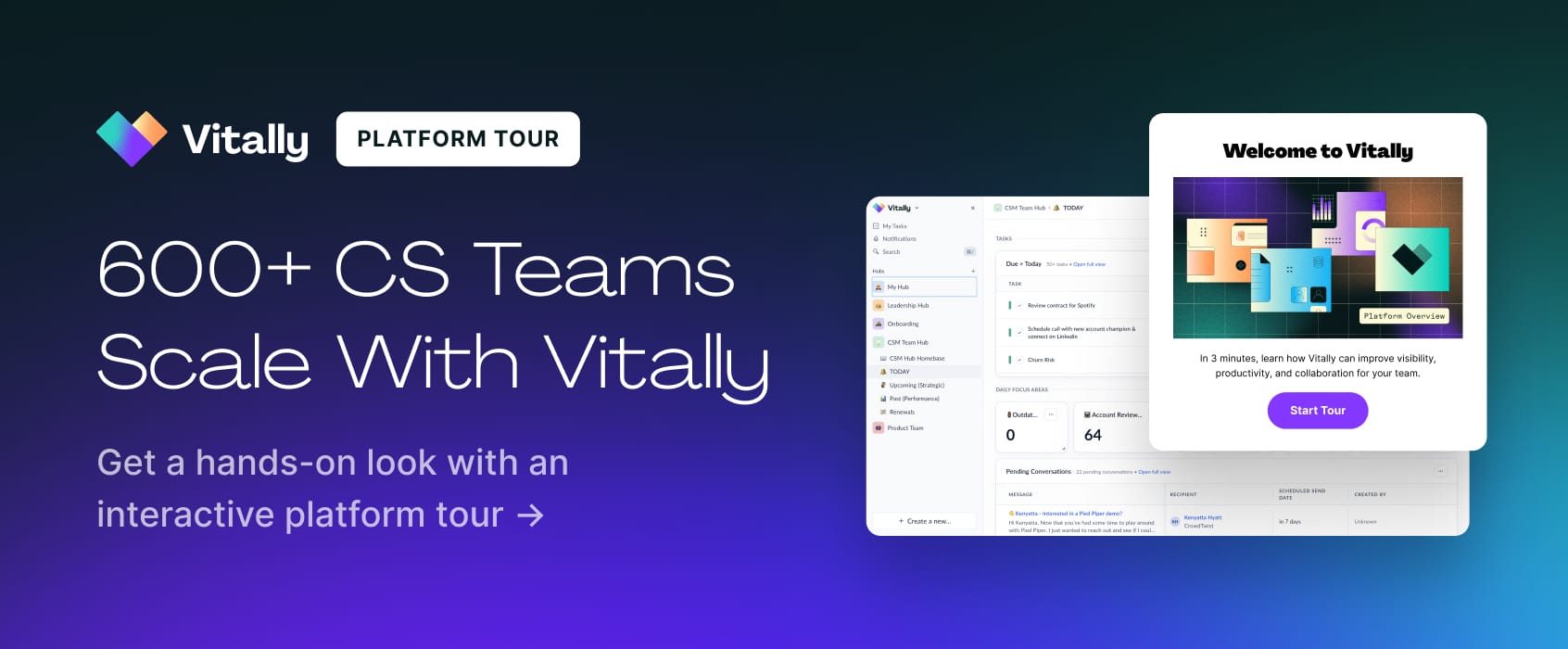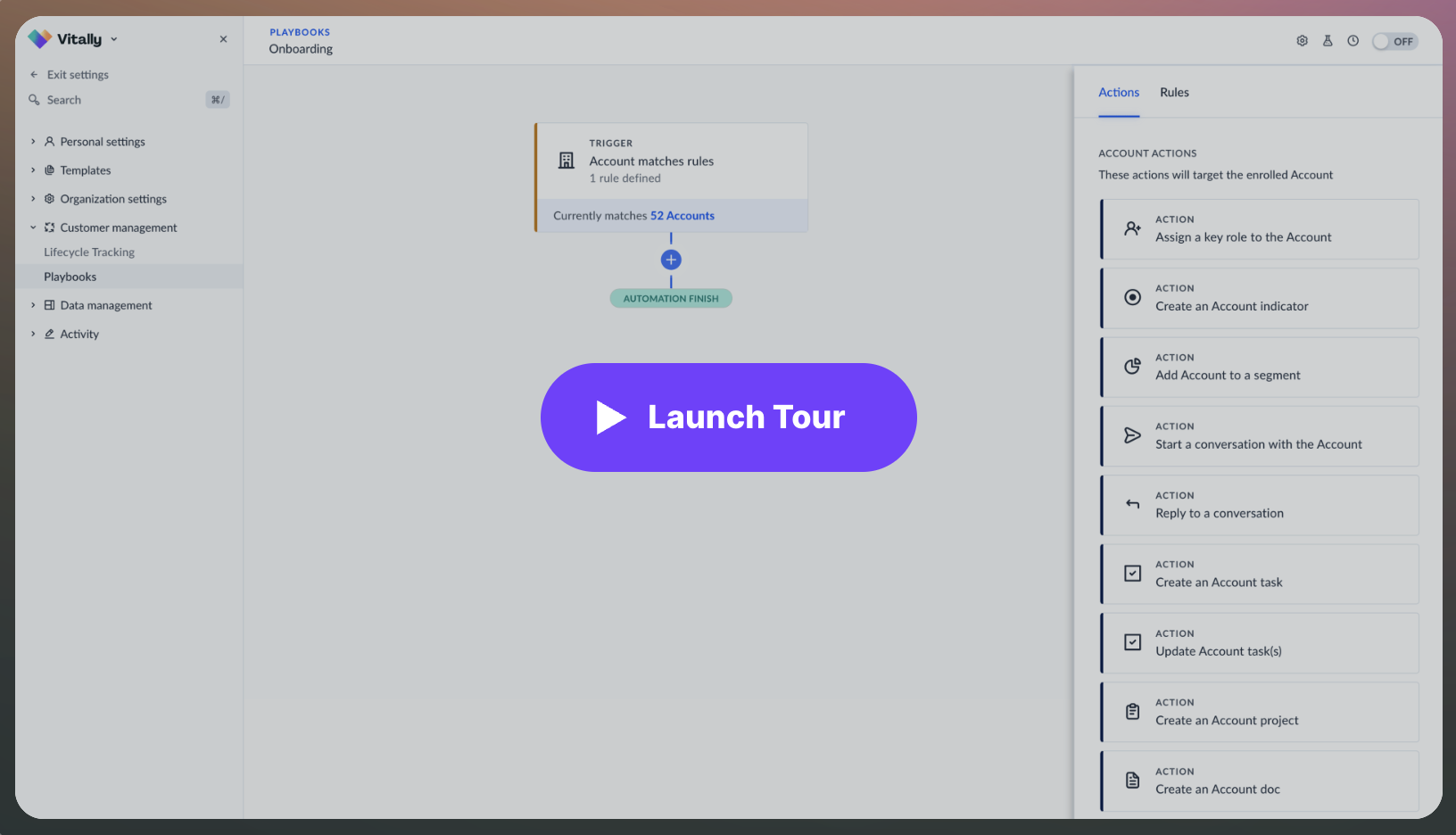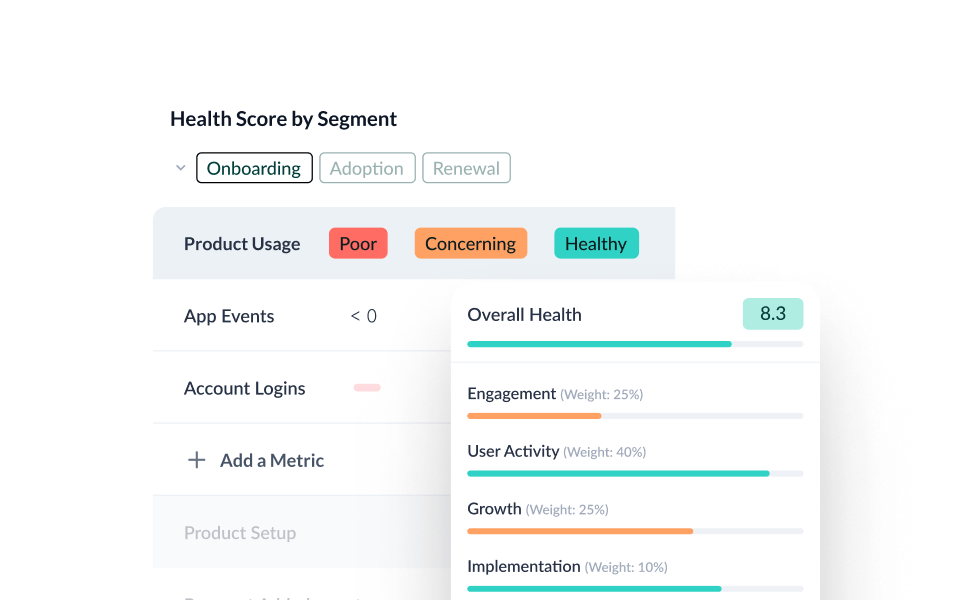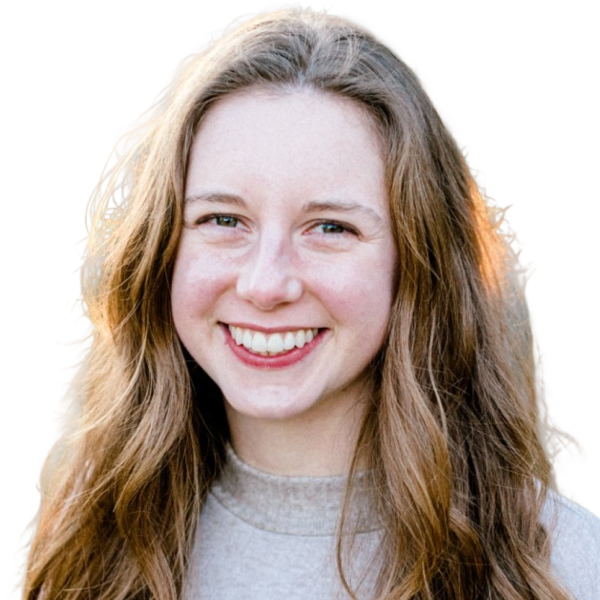
Article Overview
- Why scaling matters: Customer Success is now a core growth engine—retention drives profitability, NRR powers expansion, and scalable processes prevent CSM burnout while delivering consistency to every customer.
- When to scale: The right time isn’t “later”—it’s when CSMs are overextended, long-tail customers feel neglected, or processes lack consistency. Embedding scalable practices early ensures teams can keep up with growth.
- How to scale effectively: Automate onboarding, deliver education at scale, build predictive health scoring, segment intelligently, and close the feedback loop—supported by a Customer Success Platform like Vitally, which provides the automation, visibility, and AI intelligence to scale without sacrificing personalization.
Customer Success has evolved from a support function into a strategic growth engine. For SaaS businesses, renewal and expansion are now just as critical as net-new sales. But as organizations grow, leaders inevitably face a key question:
How do you scale Customer Success without losing the personal touch that keeps customers loyal? This guide explores:
- What scaled Customer Success really means (and doesn’t mean).
- When the right time is to scale.
- Proven strategies and tools to build scalable CS programs.
- How AI is transforming CS, making scale possible without sacrificing personalization.
The goal is to help CS leaders design scalable functions that balance efficiency with impact.
What Scaled Customer Success Really Means
Scaled Customer Success (sometimes called “digital CS” or “tech-touch CS”) is a one-to-many approach to managing customer relationships. Instead of every engagement requiring a live 1:1 touchpoint, teams leverage automation, digital channels, and self-service resources to reach more customers without compromising quality.
But let’s clear up two common misconceptions right away…
❌ Scaling ≠ Adding Headcount. Scaling CS is not about hiring more CSMs. It’s about using automation, playbooks, and digital programs to multiply impact without multiplying cost.
❌ Scaling ≠ Abandoning High-Touch. Some leaders worry scaled CS means less personalization. In reality, scaled CS should form the foundation of your strategy, with high-touch layered on top where it drives the most value.
Think of scaled CS as working smarter, not harder. Even if you only manage 20 enterprise customers, scaled CS helps by automating repetitive tasks (like onboarding checklists, renewal reminders, or follow-up emails) and ensuring consistency across accounts.
As Jamie Davidson, Co-Founder & CEO at Vitally, put it:
“Even if you only have 20 enterprise customers, I think you should be doing scaled Customer Success because scaled CS is really just the mass distribution of insights, of thought leadership, of engagement, of communication. It’s the automation of repetitive or simple tasks, and you should be doing that across all of your customer base.”
Why Scaling Customer Success Matters for Growth
Because Retention Drives Profitability
A classic Bain study found that a 5% increase in retention can lift profits by 25–95%, therefore, it costs far less to retain an existing customer than to acquire a new one, and loyal customers are more likely to renew, expand, and advocate for your brand.
Because NRR is the Growth Lever
Net Revenue Retention has become the single most scrutinized metric in SaaS boardrooms. In 2024, companies with ≥100% NRR grew 48% faster year-over-year than peers below that threshold.
Scaling CS directly impacts NRR by systematizing how teams identify expansion opportunities (upsells, cross-sells) and mitigate churn risks before renewal. Without scalable practices, growth stalls as the team simply cannot cover enough accounts effectively.
Because Efficiency is Non-Negotiable
In an era of tighter budgets and headcount freezes, CS leaders face pressure to “do more with less.” Scaled CS unlocks efficiency by automating repetitive tasks, digitizing customer education, and creating one-to-many engagement programs.
This doesn’t just save time, it ensures customers receive proactive value consistently, regardless of which CSM they’re assigned to.
Because Consistency Builds Trust
Customers expect predictable, value-driven interactions. So, if your QBRs feel like a slog of the “same old, same old”, it won’t go over well with your customers.
Scaling introduces standardized playbooks and digital touchpoints so no account is left to the “style” of an individual CSM. This consistency improves the overall customer experience, making retention and expansion more reliable.
Without scaling your Customer Success function, long-tail customers are left behind, expansion dollars remain hidden, and teams burn out. With it, companies can extend high-quality engagement across their customer base, maintain predictability, and focus resources where they matter most.
So, When Is the Right Time to Scale?
When Your CSMs are Overextended
When each manager is juggling 50+ accounts, no amount of effort can make up for limited bandwidth. Important signals, like:
- Declining product usage.
- Slow or stalled adoption.
- Unhappy sentiment in support tickets.
Inevitably slip through the cracks. Scaling allows teams to set automated “safety nets” that ensure customers get the right message or intervention at the right time, even if the CSM can’t be there in person.
When Your Smaller Customers Feel Neglected
It’s easy to prioritize enterprise accounts, but long-tail customers collectively represent enormous revenue potential.
Many SaaS companies discover that accounts under $100K ARR are the first to churn when ignored—but also the most likely to expand when given structured attention. Scaled CS programs, such as automated check-ins and curated content, ensure these customers don’t feel invisible.
When CMS Processes Feel Ad Hoc
If every CSM is running their own playbook, leadership has no way to guarantee consistency or measure what’s working.
Scaling forces organizations to codify their best practices into automated workflows, digital journeys, and data-driven interventions. This doesn’t eliminate flexibility, it simply raises the baseline of quality and reliability across the team.
READ MORE: Building a Customer Success Process That Actually Works

5 Strategies for Scaling Customer Success
1. Automate Onboarding for Consistency
Onboarding is one of the most resource-intensive phases of the customer journey. It sets the tone for the entire relationship, but much of the work can be standardized without losing impact.
How to scale onboarding:
- Use automated playbooks to deliver welcome emails, setup guides, and first-use training triggered by product milestones.
- Create video walkthroughs and tutorials for common “how do I…” questions to reduce repetitive CSM-led calls.
- Provide interactive checklists or dashboards so customers can track their own onboarding progress.
- Implement time-based nudges (e.g., reminders if a customer hasn’t completed setup within 14 days).

Impact
Faster time-to-value and reduced manual effort for CSMs. Customers also feel empowered, which builds early trust. One scaled CS team reported onboarding thousands of SMB accounts with just a handful of CSMs by relying on automation for repetitive tasks, while reserving live intervention for at-risk accounts.
2. Deliver Education at Scale
Customers crave ongoing guidance, but not every touchpoint requires a live CSM. Scaled education ensures customers receive the right knowledge at the right time—without overloading the team.
How to scale education:
- Deploy email drip campaigns aligned to lifecycle stages (e.g., “30 days in,” “before renewal”). These can anticipate common questions before they’re asked.
- Build knowledge bases and resource hubs segmented by role, industry, or use case so content feels personalized.
- Host webinars or office hours to reach dozens of accounts at once while still offering interactivity.
- Encourage peer-to-peer learning via customer communities or discussion forums.
Impact
Customers get timely, relevant information without needing 1:1 attention. CSMs are freed from answering the same questions repeatedly, and support teams see fewer “ticket spikes” around predictable product issues.
3. Build Predictive Health Scoring
Traditional health scoring often relies too heavily on a few basic metrics like login frequency or ticket volume. Modern scaled CS takes a predictive, multi-dimensional approach to better anticipate both risk and growth opportunities.

What to include in predictive health scoring:
- Product telemetry: Which features are being used, and how often?
- Engagement metrics: Meeting attendance, email opens, survey completion rates.
- Support interactions: Ticket frequency, sentiment in conversations, escalation patterns.
- Financial data: Contract size, renewal dates, billing anomalies.
- Voice of customer: NPS/CSAT scores, qualitative feedback.
Impact
CSMs can prioritize their time on accounts where intervention will have the greatest effect, rather than spreading themselves thin across all customers equally.
4. Segment Customers Intelligently
Scaling CS doesn’t mean treating every customer the same. Effective segmentation ensures each group receives the level of support that matches their value, needs, and potential.
Ways to segment customers:
- By ARR tier: High-value accounts may get dedicated CSMs plus scaled programs, while long-tail accounts rely mostly on digital CS.
- By industry or persona: Different industries or job roles often require tailored messaging and resources.
- By product adoption patterns: Group customers by how they actually use your product (power users vs. low adoption) and target interventions accordingly.
- By lifecycle stage: Onboarding customers require different scaled touches than renewal-stage accounts.
Impact
Segmentation allows scaled programs to feel highly personalized. A targeted webinar for “finance leaders using X product feature” lands much better than a generic training blast. Done well, segmentation keeps scaled CS from feeling “cookie cutter.”
5. Close the Feedback Loop
Scaling CS isn’t only about pushing content and automation, it’s also about listening at scale and ensuring customer voices shape the relationship.
How to systematize feedback:
- Automate NPS or CSAT surveys at key milestones (e.g., after onboarding, before renewal).
- Use automated workflows to trigger follow-ups based on responses (e.g., if NPS < 6, create a CSM task within 24 hours).
- Track themes in feedback (e.g., feature requests, pricing concerns) across the entire customer base.
- Share aggregated insights with product, sales, and marketing to inform roadmaps and positioning.
Impact
Customers feel heard, even in a scaled model. More importantly, leaders gain visibility into systemic issues across the customer base. Addressing these not only prevents churn but also accelerates expansion by aligning your product with evolving customer needs.
How AI Supercharges Your Scaled CS
AI has shifted scaled CS from proactive to predictive. No longer limited to automating tasks, AI now analyzes complex data, surfaces insights, and even drafts actions for CSMs. Here’s how AI is changing the game:
Predictive Risk & Expansion Analytics
AI models analyze product usage, sentiment, and engagement to flag accounts likely to churn or expand. Teams can intervene before revenue is at risk.
AI Copilots for CSMs
Instead of manually writing follow-ups or summarizing calls, AI copilots draft emails, QBR decks, and meeting recaps in seconds.

As Bill Walker, Director of CS Ops at Cyera, put it:
“Vitally’s AI Copilot is a game-changer for our team. We have streamlined account management by turning notes and conversations into summaries and insights. It improves cross-team collaboration and frees up engineering time to focus on customer outcomes.”
Unstructured Data Analysis
Notes, tickets, surveys, and transcripts often hide key signals. AI surfaces these automatically, turning noise into actionable insights.
Personalized Digital Engagement
AI-driven segmentation ensures one-to-many programs feel tailored—customers receive content aligned to their stage, behavior, or goals.

Productivity Gains
Research from Vitally shows that AI saves CS teams 10+ hours per week per CSM, freeing time for strategic conversations.
CSPs Make Scaling That Much Easier
When done right, scaling Customer Success helps teams deliver consistent engagement to every customer, retain and grow the long tail profitably, free CSMs to focus on high-value work, and unlock predictive insights with AI to improve outcomes across the board.
But this kind of scale isn’t possible with spreadsheets or CRMs built for sales. A Customer Success Platform (CSP) like Vitally provides the automation, visibility, collaboration, and artificial intelligence needed to scale effectively without sacrificing personalization.
The businesses that win today will be those that scale intelligently, with the right platform and processes at the center of their CS function. The question for CS leaders isn’t whether to scale, but how fast you can put the right systems in place to make it possible.










